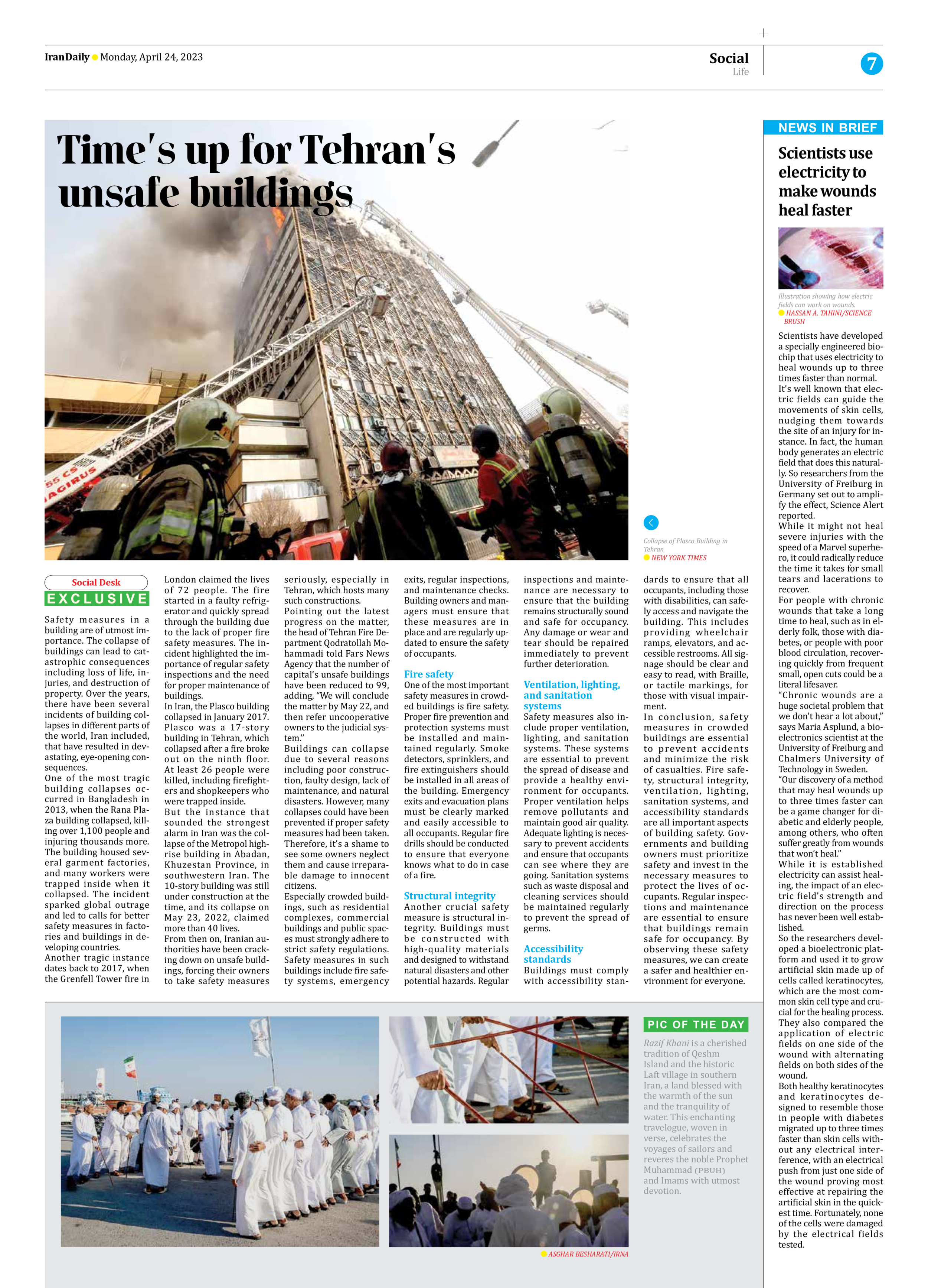
Time’s up for Tehran’s unsafe buildings
Safety measures in a building are of utmost importance. The collapse of buildings can lead to catastrophic consequences including loss of life, injuries, and destruction of property. Over the years, there have been several incidents of building collapses in different parts of the world, Iran included, that have resulted in devastating, eye-opening consequences.
One of the most tragic building collapses occurred in Bangladesh in 2013, when the Rana Plaza building collapsed, killing over 1,100 people and injuring thousands more. The building housed several garment factories, and many workers were trapped inside when it collapsed. The incident sparked global outrage and led to calls for better safety measures in factories and buildings in developing countries.
Another tragic instance dates back to 2017, when the Grenfell Tower fire in London claimed the lives of 72 people. The fire started in a faulty refrigerator and quickly spread through the building due to the lack of proper fire safety measures. The incident highlighted the importance of regular safety inspections and the need for proper maintenance of buildings.
In Iran, the Plasco building collapsed in January 2017. Plasco was a 17-story building in Tehran, which collapsed after a fire broke out on the ninth floor. At least 26 people were killed, including firefighters and shopkeepers who were trapped inside.
But the instance that sounded the strongest alarm in Iran was the collapse of the Metropol high-rise building in Abadan, Khuzestan Province, in southwestern Iran. The 10-story building was still under construction at the time, and its collapse on May 23, 2022, claimed more than 40 lives.
From then on, Iranian authorities have been cracking down on unsafe buildings, forcing their owners to take safety measures seriously, especially in Tehran, which hosts many such constructions.
Pointing out the latest progress on the matter, the head of Tehran Fire Department Qodratollah Mohammadi told Fars News Agency that the number of capital’s unsafe buildings have been reduced to 99, adding, “We will conclude the matter by May 22, and then refer uncooperative owners to the judicial system.”
Buildings can collapse due to several reasons including poor construction, faulty design, lack of maintenance, and natural disasters. However, many collapses could have been prevented if proper safety measures had been taken. Therefore, it’s a shame to see some owners neglect them and cause irreparable damage to innocent citizens.
Especially crowded buildings, such as residential complexes, commercial buildings and public spaces must strongly adhere to strict safety regulations. Safety measures in such buildings include fire safety systems, emergency exits, regular inspections, and maintenance checks. Building owners and managers must ensure that these measures are in place and are regularly updated to ensure the safety of occupants.
Fire safety
One of the most important safety measures in crowded buildings is fire safety. Proper fire prevention and protection systems must be installed and maintained regularly. Smoke detectors, sprinklers, and fire extinguishers should be installed in all areas of the building. Emergency exits and evacuation plans must be clearly marked and easily accessible to all occupants. Regular fire drills should be conducted to ensure that everyone knows what to do in case of a fire.
Structural integrity
Another crucial safety measure is structural integrity. Buildings must be constructed with high-quality materials and designed to withstand natural disasters and other potential hazards. Regular inspections and maintenance are necessary to ensure that the building remains structurally sound and safe for occupancy. Any damage or wear and tear should be repaired immediately to prevent further deterioration.
Ventilation, lighting, and sanitation systems
Safety measures also include proper ventilation, lighting, and sanitation systems. These systems are essential to prevent the spread of disease and provide a healthy environment for occupants. Proper ventilation helps remove pollutants and maintain good air quality. Adequate lighting is necessary to prevent accidents and ensure that occupants can see where they are going. Sanitation systems such as waste disposal and cleaning services should be maintained regularly to prevent the spread of germs.
Accessibility standards
Buildings must comply with accessibility standards to ensure that all occupants, including those with disabilities, can safely access and navigate the building. This includes providing wheelchair ramps, elevators, and accessible restrooms. All signage should be clear and easy to read, with Braille, or tactile markings, for those with visual impairment.
In conclusion, safety measures in crowded buildings are essential to prevent accidents and minimize the risk of casualties. Fire safety, structural integrity, ventilation, lighting, sanitation systems, and accessibility standards are all important aspects of building safety. Governments and building owners must prioritize safety and invest in the necessary measures to protect the lives of occupants. Regular inspections and maintenance are essential to ensure that buildings remain safe for occupancy. By observing these safety measures, we can create a safer and healthier environment for everyone.







